ASRock DeskMini 110 mini-STX PC Review
by Ganesh T S on June 8, 2016 8:45 AM ESTPerformance Metrics - I
The ASRock DeskMini 110 was evaluated using our standard test suite for small form-factor PCs. Not all benchmarks were processed on all the machines due to updates in our testing procedures. Therefore, the list of PCs in each graph might not be the same. In the first section, we will be looking at SYSmark 2014, as well as some of the Futuremark benchmarks.
BAPCo SYSmark 2014
BAPCo's SYSmark 2014 is an application-based benchmark that uses real-world applications to replay usage patterns of business users in the areas of office productivity, media creation and data/financial analysis. Scores are meant to be compared against a reference desktop (HP ProDesk 600 G1 with a Core i3-4130, 4GB RAM and a 500GB hard drive) that scores 1000 in each of the scenarios. A score of, say, 2000, would imply that the system under test is twice as fast as the reference system.

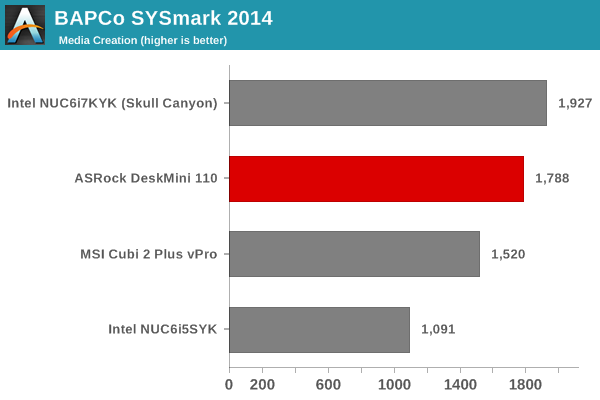
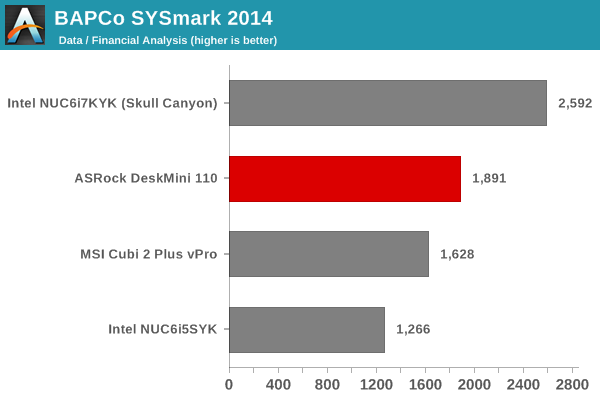
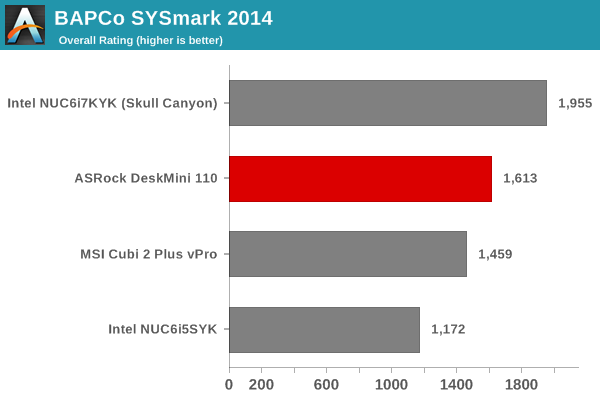
SYSmark scores are heavily dependent on the CPU in the system. Here, we see the 65W TDP Core i5-6500 come behind the 45W TDP Core i7-6770HQ, primarily due to the hyperthreading (4C/8T) features of the latter. Note that the Core i5-6500 is a 4C/4T CPU. Other than that, the DeskMini that we built has no trouble proving to be better at business workloads compared to systems equipped with lower TDP CPUs.
Futuremark PCMark 8
PCMark 8 provides various usage scenarios (home, creative and work) and offers ways to benchmark both baseline (CPU-only) as well as OpenCL accelerated (CPU + GPU) performance. We benchmarked select PCs for the OpenCL accelerated performance in all three usage scenarios. These scores are heavily influenced by the CPU in the system. The aspects noted in the SYSmark 2014 subsection apply here too. The DeskMini comes second to Skull Canyon, but has no trouble being better than the other systems in the comparison list.
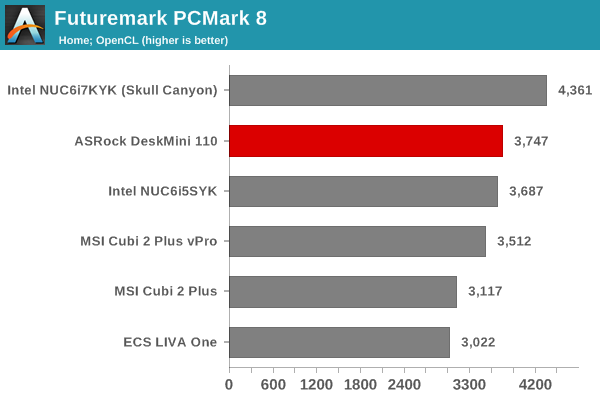
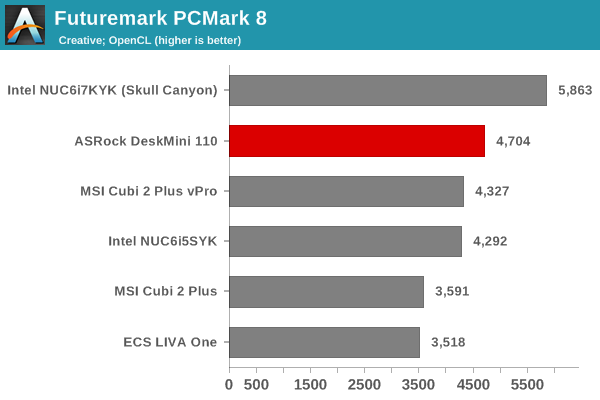

Miscellaneous Futuremark Benchmarks
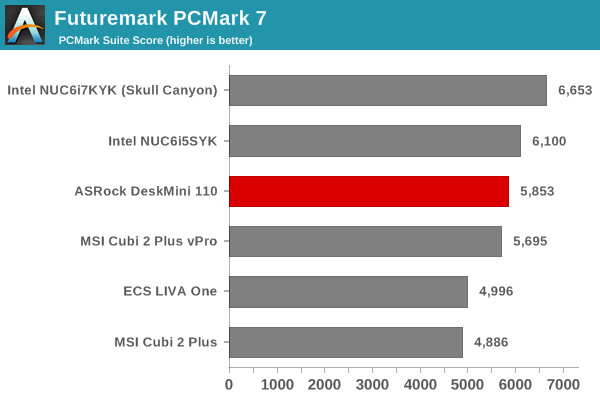
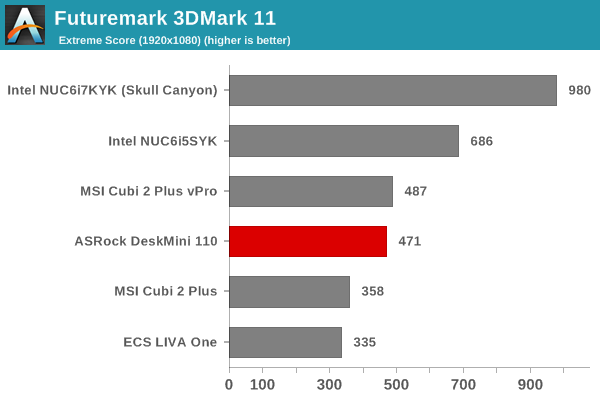
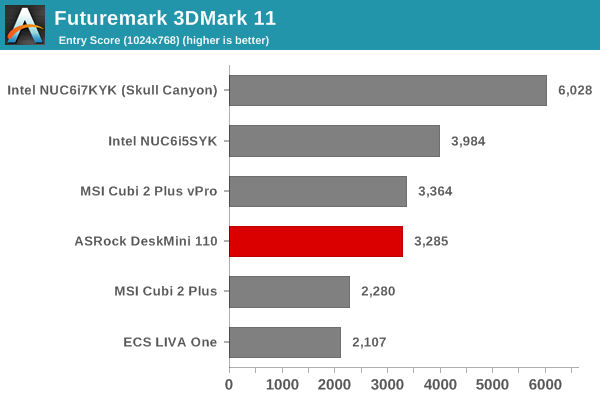

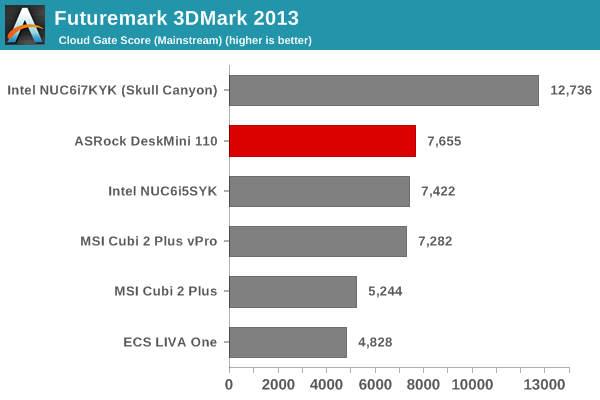
The 3D benchmarks present a different story, because the HD Graphics 530 is not as powerful as the GPUs in either Skull Canyon (Iris Pro with eDRAM) or even the U-series models for many workloads.
3D Rendering - CINEBENCH R15
We have moved on from R11.5 to R15 for 3D rendering evaluation. CINEBENCH R15 provides three benchmark modes - OpenGL, single threaded and multi-threaded. Evaluation of select PCs in all three modes provided us the following results. The Core i5-6500's single threaded performance is top of the line, thanks to the high TDP / clock speed. However, absence of hyperthreading allows Skull Canyon (Core i7-6770HQ) to sneak ahead in the multi-threaded case. The OpenGL results lend further credence to the analysis of the GPU capabilities made in the previous subsection.
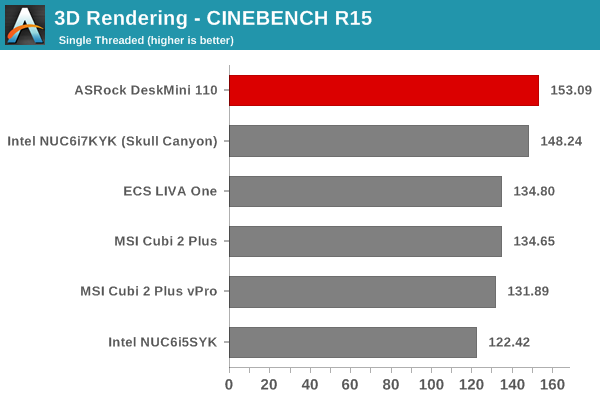
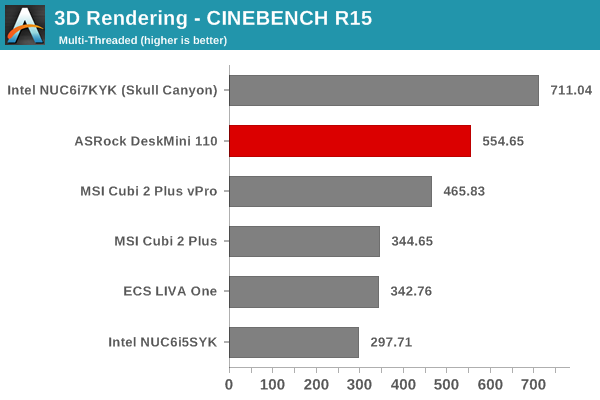
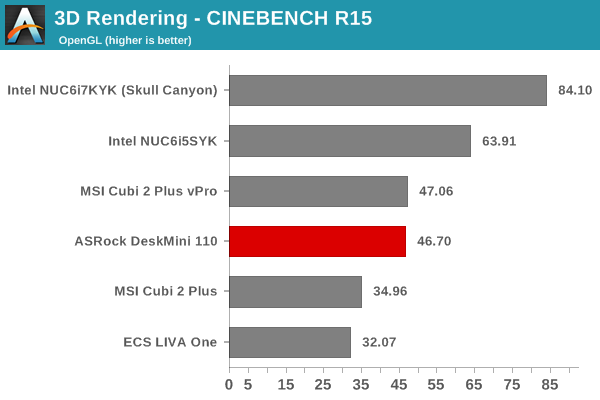










85 Comments
View All Comments
dj_aris - Wednesday, June 8, 2016 - link
What if mini-STX boards came with an MXM slot? That would spawn a really fresh and interesting form factor...DanNeely - Wednesday, June 8, 2016 - link
Unless the OEM was also able to solve the problem of MXM cards not being readily available on the aftermarket (and what is available tending to be obscenely priced) I suspect it'd be more likely to spawn frustration and rage.bill.rookard - Wednesday, June 8, 2016 - link
Well, that's the point of putting it out there. If you make it available, and people do start to use it, companies will start to produce boards for it, competition ensues, prices drop and availability goes up.nathanddrews - Wednesday, June 8, 2016 - link
But MXM has been available for over a decade (laptops) and it hasn't helped anything. I still remember trying to upgrade my Dell laptop to a 7950GTX and the MXM chip was $900 on eBay. even now, the 980M is over $800. If it hasn't caught on by now...xchaotic - Wednesday, June 8, 2016 - link
Basically MXM, if priced exactly the same as desktop PCIE boards should give vendors more margin. So IMO MXM should be prices identically to their big cousins and that wouldn't be bad for both consumers and OEMswolrah - Wednesday, June 8, 2016 - link
Except that it would make no sense for them to be priced the same considering the same parts would have to be packed much more densely in to the MXM board compared to a desktop board.That's like saying a laptop should be the same price as a comparable desktop + monitor + keyboard + touchpad.
xenol - Wednesday, June 8, 2016 - link
Probably the reason why MXM boards are so expensive is that there are no official markets for them. People complain why Mini-ITX boards can be as pricey as ATX boards or why SFX power supplies are as pricey as ATX ones. They're probably pricey because there's a niche demand for them (though I'd argue mITX boards tend to have more core features than ATX ones)Morawka - Wednesday, June 8, 2016 - link
No cooling fan, no heatsink, no display outputs, reduced bill of materialsNamisecond - Wednesday, July 6, 2016 - link
You're asking for 80 square inches of board real estate to be miniaturized and crammed into about 5., and then to be sold at the same rate as that bigger item.You may as well demand all labor to be priced at the same rate as that of a Shenzhen assembly line worker.
barleyguy - Wednesday, June 8, 2016 - link
I had an Asus laptop with an MXM slot. The major problem there was compatibility. Asus put custom firmware on the boards that was required for the computer to function. Basically the first 512K (I think) of the firmware was Asus specific, and the remaining part came from NVidia.I think that's been the issue with MXM all along: You can't just buy any laptop with the slot, buy any card for the slot, and expect it to work without serious technical wizardry.
Low profile PCI Express probably makes more sense. It wouldn't greatly increase the size of a box like this.